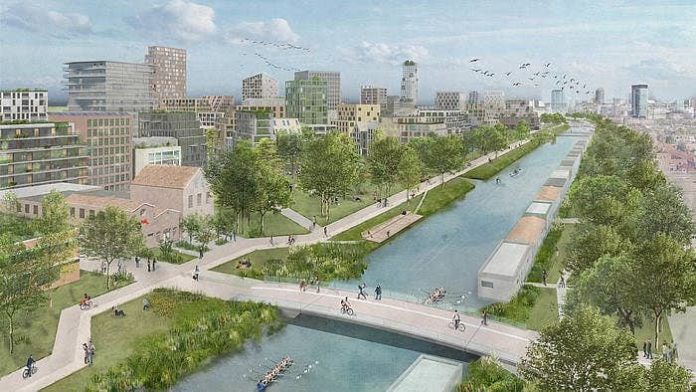We need homes. A lot of homes. Not just affordable housing, but also middle-income ones, and even luxury homes. I agree with virtually every word of Hayley Bonsteel’s excellent piece for The Urbanist titled “How to Finetune Rep. Macri’s Single-Family Rezone Bill.” I have long been opposed to single-family zoning (not housing), for a number reasons but largely because of its malicious history. Bonsteel is correct in that we must return to our abundant housing roots.
However, abolishing single-family zoning will barely move the needle on our housing crisis. We can’t duplex and triplex our way out of this—though it’s a good step since we do need more diverse types of housing, and rapidly. The decades long fight just to add, and then liberalize accessory dwelling units, or re-legalize duplexes and small apartments in now single-family zones, will pale in comparison to the needed shift.
We sit at the threshold of a decades long housing crisis, and a steepening climate crisis (one our mayor seems wholly unprepared to take on). The region includes some of the smartest and most sophisticated companies in the world, but rather than come to terms with the depth of the scale of this crisis, we put on blinders.
According to a Microsoft analysis, we have a housing deficit in the Puget Sound region of 316,000 low- and middle-income housing units. In Seattle alone, their analysis shows a deficit of over 194,000 units. These are the numbers for today, not in a decade, not in 2040. To give a sense of the scale of this deficit, 316,000 units is about 84% of all of the housing units that exist in Seattle presently. 194,000 units is greater than the sums of Bellevue (61,000 units), Tacoma (89,500 units), and Federal Way (36,500 units). In order to close the gap Microsoft has estimated, we effectively need to build these three cities within our current city limits. And not some time down the road, but right now.
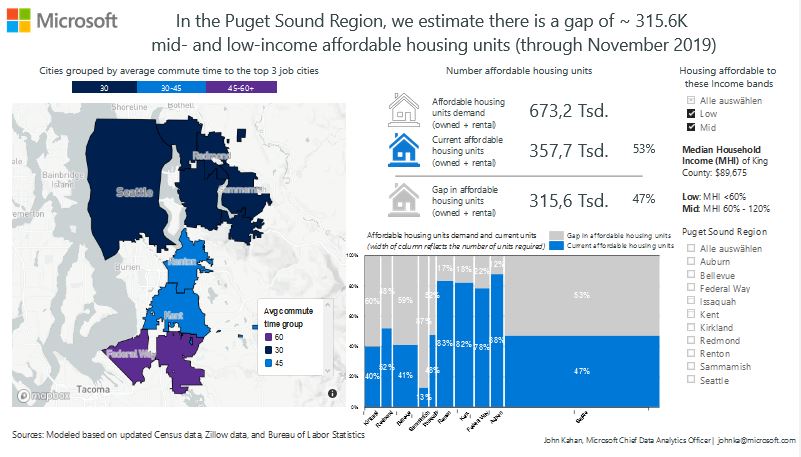
The King County Regional Affordable Housing Report identified similar numbers, an additional 156,000 low-income homes needed today, with another 88,000 low-income homes by 2040.
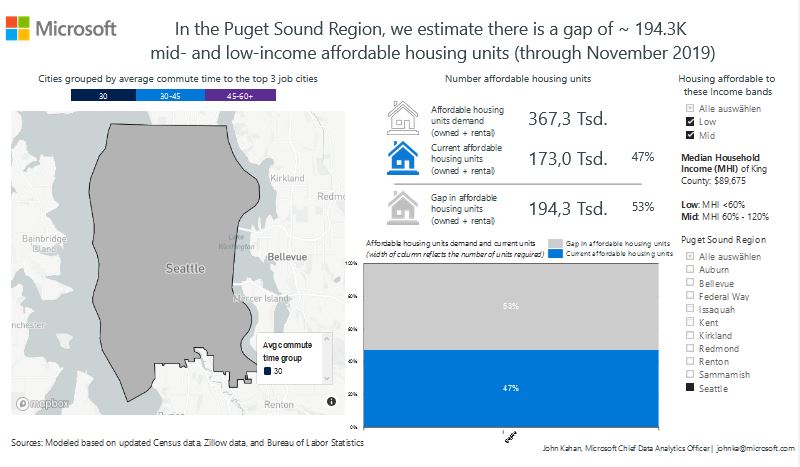
Failing to tackle these compounding and steepening crises head-on will be incredibly detrimental. Supercommuting is way up, and regional transportation emissions per capita are higher today than they were in 1990.
Adding duplexes and triplexes in the outskirts of cities or even within the unincorporated Urban Growth Boundary may seem like an urbanist win, but will largely result in more vehicles on the road, more congestion. The electric vehicle tipping point in the United States is being pushed further and further out, and with SUV sales outpacing electric vehicles 26:1, we need to start looking at how we can rapidly decarbonize our region outside of relying on electric vehicles.

A large part of the region’s push needs to be reducing and eliminating vehicle miles traveled, and many global cities are lapping us on this. Paris Mayor Anne Hidalgo has overseen a 22% drop in congestion in just six years, and just came out with a very progressive plan for her re-election campaign that would turn Paris into a city of short distances, put bike lanes on every major road (hey, great idea!), and remove 168 acres of parking for pedestrianized space (this too!). Progressive policies like this are difficult without compactness and density, especially in a sprawling region like Seattle’s.
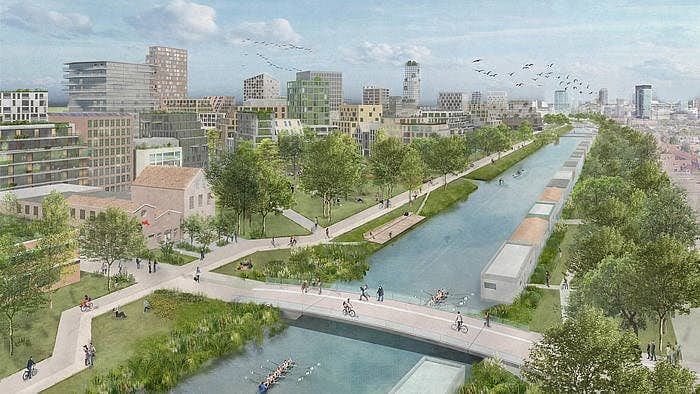
The Dutch city of Utrecht is pioneering a stunning 6,000-dwelling unit, virtually car-free district, Merwede, on a 24-hectare (60-acre) parcel in the city. It is a literal testing ground for a healthy, sustainable, climate-proof neighborhood, prioritizing pedestrians, cycling and livability. A high level of parks, green space, and open space is planned, as are schools, sports facilities, commercial spaces, retail, and diverse housing types. Buildings will be low-energy or nearly Passivhaus (as all new buildings in the European Union are required to be, as of this year). The project will also incorporate a healthy mix of social housing, market-rate apartments, and collective housing similar to baugruppen. Much of the housing will be designed by the people who live in them. (Planning documents can be found online.)
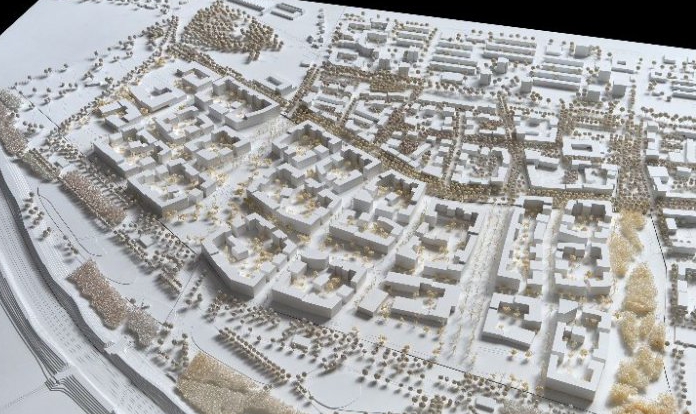
The city of Munich is presently developing a massive new sustainable district for up to 25,000 residents and 15,000 workers on the outskirts, called Freiham. It is intended to be “a city of short distances,” inclusive, sustainable, and car-light. The total site area is 350 hectares (865 acres) and features large parks and open space. The urban characteristics are largely perimeter block buildings of varied heights. Schools, restaurants, cafes, shops, offices, kindergartens are all worked into the plan. There will be two commuter rail stations (S-Bahn) at the north and south ends of the district, with an U-Bahn (subway) stop in the middle. In order to facilitate a social mix, half of the units will be social housing. Land is being awarded on concepts, and not on highest tender, with a focus on cooperatives, baugruppen/baugemeinschaften (10% of units!), and other forms of innovative non-market housing. This is one of the largest urban developments underway in Germany today, and is going to take years to finalize. (Planning documents can be found online.)
Austria also has several large scale urban developments underway. One of the largest is Vienna’s Seestadt Aspern, an in-process district with a similar scale and scope of Munich’s Freiham, with housing for 20,000 people on a 240-hectare (593-acre) parcel that was formerly the Aspern Airport. Like Munich, this district is intended to be a “city of short distances,” with housing, jobs, parks, schools, shops, retail and connections to transit to enable car-free and car-light living. Like Freiham, there is also a large amount of social housing being built here, to ensure a positive economic mix. Both of these developments utilized design competitions to determine urban planning schemes, which then went on to planning with extensive community outreach and expert inputs. The level of planning on both of these undertakings is incredibly detailed, but this isn’t surprising, regional and urban planning in Germany and Austria is extremely comprehensive and worth taking a closer look at. (Masterplan documents for Seestadt can be found here and here.)
The scale of the Puget Sound’s housing deficit requires bold thinking along these lines. As a region, we are wholly underprepared for the scale shift that needs to happen in order to address our housing crisis that is rapidly overlapping with a climate crisis. Seattle alone needs nearly twenty Seestadt Asperns—and this is just to meet today’s need for low- and middle-income housing.. That’s not even taking in to account the need for market-rate housing to absorb the thousands of high wage earners flocking to the city every year.
Yes, we need to abolish exclusionary zoning, which didn’t even exist in the region a century ago. But more importantly, Seattle needs a new framework for urban living that protects the climate, consumes fewer resources, improves quality of life, and prioritizes social inclusion for all residents. The city tried this in the 1990s, but the existing, unwelcoming neighborhood plans aren’t going to cut it.
We need to be planning for projects like Seestadt, like Freiham, like Merwede in the Puget Sound region if we are to meet both our housing and climate goals. Where are the incentives to live without a car? There have been thousands in tax rebates for an electric vehicle, but nothing for an electric cargo bike.
The European Union mandates net zero and Passivhaus buildings and funds research and market innovation, the Pacific Northwest falls further behind. Where is the plan to constrict the Urban Growth Boundaries so that growth actually happens in urban areas, instead of far-flung exurbs? The Urban Growth Boundary’s current largess exacerbates congestion, supercommutes and increased vehicle miles traveled emissions.
Where is the requirement that all public buildings meet or exceed Passivhaus levels of consumption today, as they are now required to in the European Union? Where are the incentives for mass timber buildings? Where is the massive push for decarbonization of new and existing building stocks? The Social Democrats, who have led Vienna for nearly a century, are underway on yet another iteration of a ‘Wohnbauoffensive’—spending hundreds of millions of dollars a year to build, preserve, and rehab social housing while improving the city–most of those funds via an income tax. Where is Seattle’s massive ‘Wohnbauoffensive’?
Failing to boldly transform our urban morphology, promote sustainable urban development, and rapidly decrease vehicle miles traveled will ensure we continue to bust our carbon emissions targets, and exacerbate climate change as opposed to mitigating it. It’s punting the ball instead of handing it off to Marshawn. This is not what climate leadership looks like, this is what climate arson looks like.
Last year, I penned a piece for The Urbanist that was a call to arms for creating a dense, mass timber, car-free passivhaus ecodistrict with ample social housing and greenspace in Interbay. The scale of our housing crisis means we need to be building one of these around every Urban Village, as well as creating new ones in places like Montlake, Laurelhurst, and Magnolia.
We need more dumb boxes. We need soft cities. We need high quality open space. But most importantly, we need more ‘dumb cities’ that excel at the simple fundamentals like creating walkable neighborhoods of short distances. Regions leading the way on re-compaction, urban intensification, and green mobility are showing how to lead on mitigating and adapting to climate change while increasing quality of life. It’s long past time the Puget Sound region’s planning priorities and land use regulations allowed the same.
Mike is the founder of Larch Lab, an architecture and urbanism think and do tank focusing on prefabricated, decarbonized, climate-adaptive, low-energy urban buildings; sustainable mobility; livable ecodistricts. He is also a dad, writer, and researcher with a passion for passivhaus buildings, baugruppen, social housing, livable cities, and car-free streets. After living in Freiburg, Mike spent 15 years raising his family - nearly car-free, in Fremont. After a brief sojourn to study mass timber buildings in Bayern, he has returned to jumpstart a baugruppe movement and help build a more sustainable, equitable, and livable Seattle. Ohne autos.

